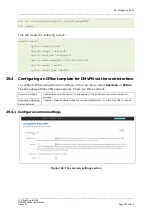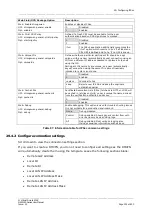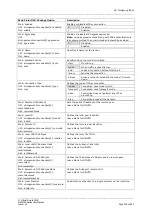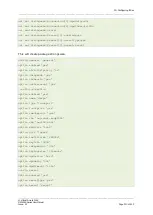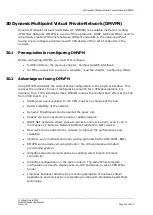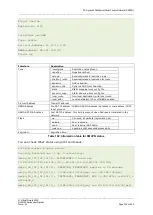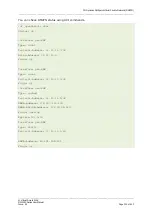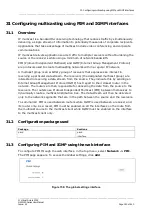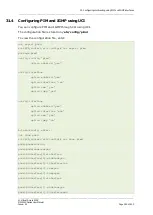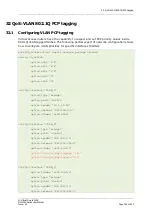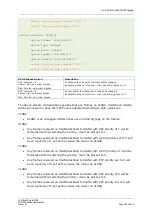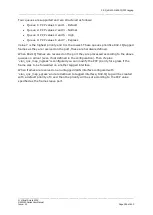
30: Dynamic Multipoint Virtual Private Network (DMVPN)
_______________________________________________________________________________________________________
_______________________________________________________________________________________________________
© Virtual Access 2018
GW2020 Series User Manual
Issue: 2.1
Page 314 of 423
30.3.2
Scenario 2
Spoke1 is in a private (NAT-ed) network, spoke2 and hub are in public network.
Figure 151: Network diagram for DMVPN spoke behind NAT
•
Spoke1 sends an NHRP registration request to the hub.
•
Hub receives this request and compares the source tunnel address of the spoke
with the source of the packet.
•
Hub sends an NHRP registration reply with a NAT extension to spoke1.
•
The NAT extension informs spoke1 that it is behind the NAT-ed device.
•
Spoke1 registers its pre- and post-NAT address.
•
When spoke1 wants to talk to spoke2, it sends an NHRP resolution request to the
hub.
•
Hub checks its cache table and forwards that request to spoke2.
•
Spoke2 caches spoke1’s GRE pre- and post-NAT IP address and sends an NHRP
resolution reply via the hub.
•
Spoke1 receives the NHRP resolution reply and updates its NHRP table with
spoke2 information. It initiates a VPN IPSec connection to spoke2.
•
When the IPSec tunnel is established, spoke1 and spoke2 can send traffic directly
to each other.
Note: if an IPSec tunnel fails to be established between the spokes then packets
between the spokes are sent via the hub.



